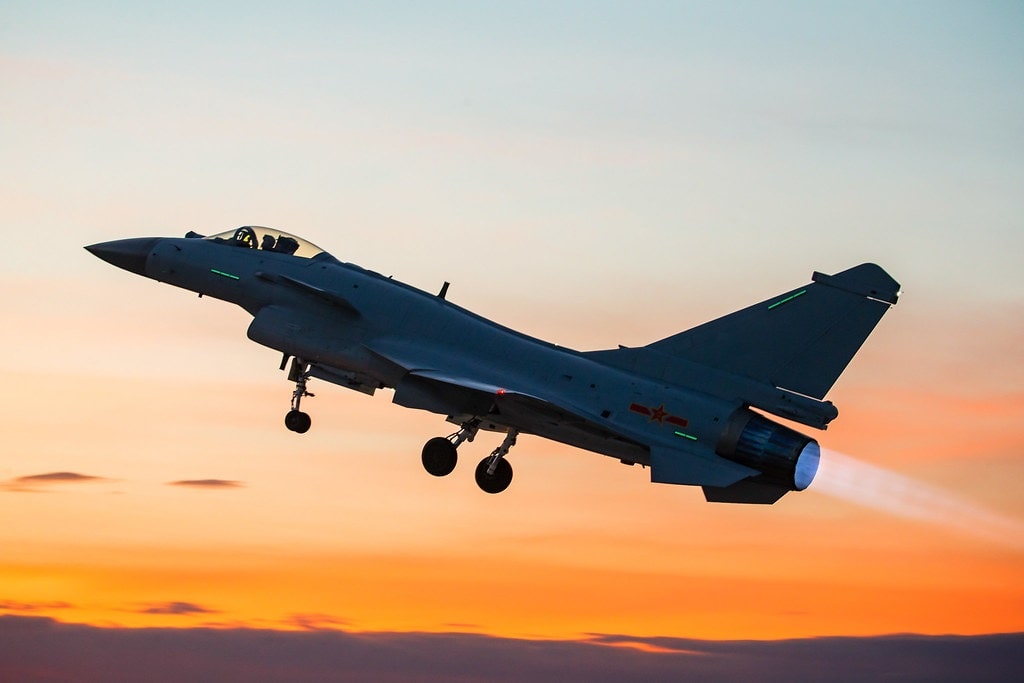China's F-16 Falcon: Meet the Chengdu J-10 Fighter
The J-10 bears many similarities to the Israeli Air Force’s Lavi jet. Designed to perform very similarly to the F-16, Israel’s homegrown jet would serve as a mainstay of the service for many years. When the Lavi’s production line was nixed, Israel began exporting the fighter, including to China.
Why the J-10 Matters: While China’s fifth-generation Chengdu J-20 fighter jet is the most recognized Chinese military airframe, it does not stand alone.
Meet the J-10 Fighter
One critical component of the People’s Liberation Army Air Force (PLAAF) is the Chengdu J-10.
The “Vigorous Dragon” is often compared to its American counterpart, the F-16 Fighting Falcon, and it often participates in flyovers in the Taiwan Strait.
In the early 1980s, the Central Military Commission became the first Chinese aircraft program dedicated to advanced development and modern acquisition processes. The PLAAF began to seek out a third-generation fighter to replace aging airframes.
The jet needed to be able to go head-to-head with the U.S. Air Force’s F-16 and the Soviet Union’s Su-27 and MiG-29. Manufactures Shenyang, Hongdu, and Chengdu all submitted proposals for different prototypes, and Chengdu was ultimately selected as the winner. While the J-10 was initially intended to be an air superiority fighter, its requirements shifted following the fall of the Soviet Union, and it came to embody a multi-role fighter. The J-10 took its maiden flight in 1988.
Design-wise, the J-10 features a tailless delta wing, foreplans, and a swept-back vertical tail, which make the airframe fairly agile. In its outer wing, the jet can carry a variety of air-to-air missiles, such as the Chinese-build Python 3 PL-8, the P-11, and the Russian Vympel R-73 and R-77.
As explained by The Drive, “The aircraft can carry a wide array of air-to-ground and anti-ship weaponry. For instance, in conjunction with its targeting pod, the aircraft can carry guided air-to-ground weapons, like the LS-500J precision-guided bombs or the newer GB1/TG500.
The fighter is equipped with some domestic technologies, including the Type 1473 fire-control radar developed by the Nanjing Research Institute of Electronic Technology.”
For years, the Russian-made AL-31 turbojet powered the J-10 and several other Chinese airframes. In 2021, however, China replaced these engines on the J-10 with the homegrown WS-10 Taihang engine.
Since this propulsion system technically enables nearly 25,000 pounds of thrust and a top speed of Mach 2.0, this engine was designed to be quite formidable. In reality though, the WS-10 has been associated with major design flaws that render it less reliable and capable than its Russian-made counterpart.
The Israeli Influence on the J-10
The J-10 bears many similarities to the Israeli Air Force’s Lavi jet. Designed to perform very similarly to the F-16, Israel’s homegrown jet would serve as a mainstay of the service for many years. When the Lavi’s production line was nixed, Israel began exporting the fighter, including to China.

American officials became concerned with Israel’s technology transfers to China in the mid-1990s, since some of the components exchanged were given to Jerusalem by Washington. Due to these transfers, it is fair to say that China’s J-10 is in part a copycat of the F-16.
Maya Carlin is an analyst with the Center for Security Policy and a former Anna Sobol Levy Fellow at IDC Herzliya in Israel. She has by-lines in many publications, including The National Interest, Jerusalem Post, and Times of Israel. You can follow her on Twitter: @MayaCarlin.
All images are Creative Commons.


